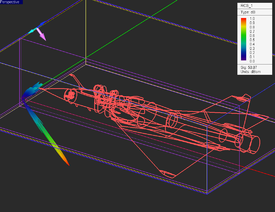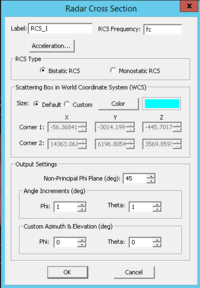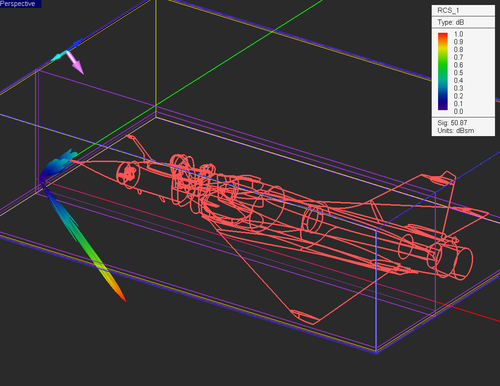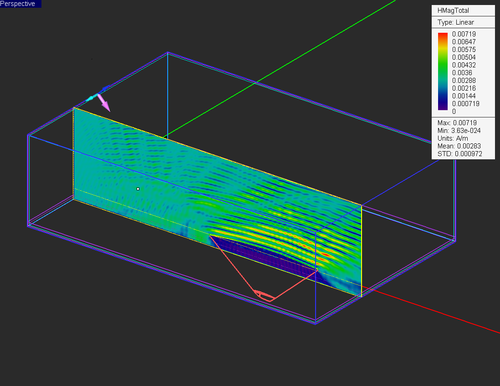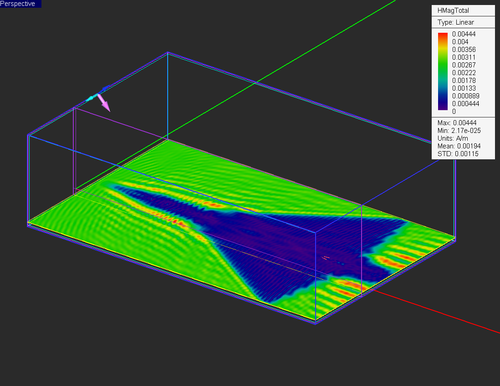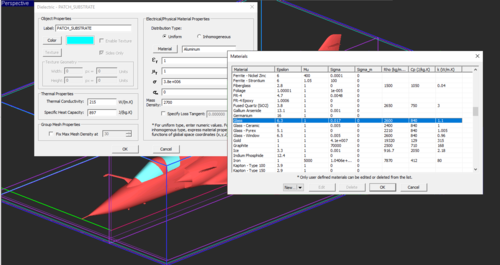Difference between revisions of "Application Article: Modeling Large Structures in EM.Tempo"
(→CAD Model) |
(→CAD Model) |
||
| Line 16: | Line 16: | ||
== CAD Model == | == CAD Model == | ||
| + | |||
| + | The CAD model used for this simulation was found on GrabCAD, an online repository of user-contributed CAD files and models. [[EM.Cube]]'s IGES import was then used to import the model. | ||
For the present simulation, we model the entirety of the aircraft, except for the cockpit, as PEC. For the cockpit, we use [[EM.Cube]]'s material database to select a glass of our choosing. | For the present simulation, we model the entirety of the aircraft, except for the cockpit, as PEC. For the cockpit, we use [[EM.Cube]]'s material database to select a glass of our choosing. | ||
Revision as of 20:53, 7 October 2016
Introduction
In this article, we compute the bistatic radar cross-section (RCS) of a Dassault Mirage III type fighter aircraft at 850 MHz with EM.Tempo.
Computational Environment
The Mirage III has approximate dimensions (length,wingspan,height) of 15m x 8m x 4.5m. Or, measured in terms of freespace wavelength at 850 MHz, 42.5 lambda x 22.66 lambda x 12.75 lambda. Thus, for the purposes of EM.Tempo, we need to solve a region of about 12,279 cubic wavelengths. For problems of this magnitude, a great deal of CPU memory is needed, and a high-performance, multi-core CPU is desirable to reduce simulation time.
Amazon Web Services allows one to acquire high-performance compute instances on demand, and pay on per-use basis. To be able to log into an Amazon instance via Remote Desktop Protocol, the EM.Cube license must allow terminal services (for more information, see EM.Cube Pricing). For this project, we used a c4.4xlarge instance running Windows Server 2012. This instance has 16 virtual CPUs, and 30 GiB of memory.
CAD Model
The CAD model used for this simulation was found on GrabCAD, an online repository of user-contributed CAD files and models. EM.Cube's IGES import was then used to import the model.
For the present simulation, we model the entirety of the aircraft, except for the cockpit, as PEC. For the cockpit, we use EM.Cube's material database to select a glass of our choosing.
Project Setup
First, we create an RCS observable with 1 degree increments in both phi and theta directions. We also create two field sensors -- one with a z-normal underneath the aircraft, and another with an x-normal along the length of the aircraft.
For the mesh, we use the "Fast Run/Low Memory Settings" preset. This will set the minimum mesh rate at 15 cells per lambda, and permits grid adaptation only where necessary. This preset provides slightly less accuracy than the "High Precision Mesh Settings" preset, but results in smaller meshes, and therefore shorter run times.
Results
mirage 1 850 MHz 5 hours, 50 minutes 270 million
